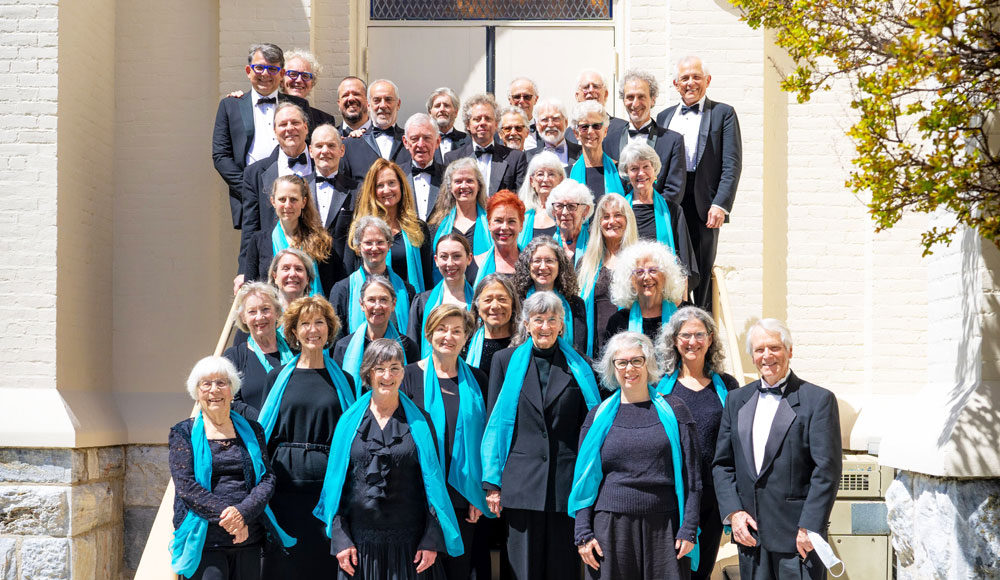The chance to sing one of the great oratorios in the Western musical canon is a thrill. Choral singers live for these experiences. Singing with a large group of accomplished musicians, accompanied by orchestra, interwoven with solos—an oratorio is a huge musical adventure. When it is over, the players have reached the end of a heroic journey.
Through countless rehearsals and a gradual mastery of the material, the ensemble achieves—if all goes well—a beautiful and authentic interpretation of the composer’s vision. Filled with space, texture and intricate vocal color, this is the apex of choral music.
Audiences for a live music event know the matchless experience of feeling the music as a living organism, filling the hall, embracing the listener in ways impossible by recorded or digital means.
As a singer with the Santa Cruz Chorale, I have enjoyed the sensory enchantment of making and experiencing the music from the inside. Nothing is as ephemeral yet enduring as being within the soundscape created by and with fellow singers. These are the peak moments of a performing artist’s life.
And those of us working on this great work for the upcoming concerts on May 18 and 19 do it for two reasons: Brahms and Christian Grube. One is the teacher who guides us through the innovative chords, fugues and counterpoint of the other.
There are only a handful of great oratorios, and the Brahms Requiem is one of them. A meditation on our finite time on this earth, it is filled with hope and trust in life eternal, presented by chorus, orchestra and two soloists.
Joining the Chorale are soprano Jennifer Paulino and baritone Daniel Cilli, both well-known performers with leading Bay Area symphonies and music groups. The chorale will be joined by the Monterey Bay Sinfonietta, an ensemble of strings and wind instruments. Ascending soprano lines that reach the stars, thundering progressions for bass and tenor voices, the intricate, unforgettable fugue sections—this oratorio has it all.
Basics of Brahms
Most of us old enough to remember life before the cell phone know a little something about Brahms: the beautiful lullaby and the somber funeral march—both of which were wildly popular during his lifetime, and beyond. A German composer, Brahms was born in 1833 in the middle of the Romantic era and, like many artists of the period, lived and worked in Vienna. A Romantic composer, Brahms explored the human response to nature and art, from the expressive to the sublime.
Finished at the end of the American Civil War, the mass was begun just as Brahms’ mentor, composer Robert Schumann, had died. The exquisite oratorio came into fruition a few years later upon the death of Brahms’ own mother. The task of writing the music became a very personal one for the popular composer, who composed its text in German, making it more accessible to those who sang it, as well as those who listened to the composition’s sweeping emotional arc.
The Brahms Requiem is unusual in that its biblical passages are sung in German. In the music, Brahms emphasizes complex and often unexpected harmonic progressions. “Great stamina is required of sopranos and tenors,” Artistic Director Grube says, “as they must sing many very high notes, and the altos and basses must deal with difficult and complicated harmonies.”
“Instead of composing a setting for the Latin texts of the traditional liturgical Requiem (Kyrie, Gloria, etc.), Brahms went to the trouble of creating an entirely new Requiem text from his knowledge of the Bible,” Grube explains. “The result is a work that is absolutely positive in its message and that does not drown in grief. I believe that these positive thoughts are of particular importance today.”
Santa Cruz Chorale presents Johannes Brahms: Ein Deutsches Requiem, May 18, 8pm, and May 19, 4pm, at Holy Cross Church, 210 High St., SC. $5-$30. santacruzchorale.org/concert/spring-concert














